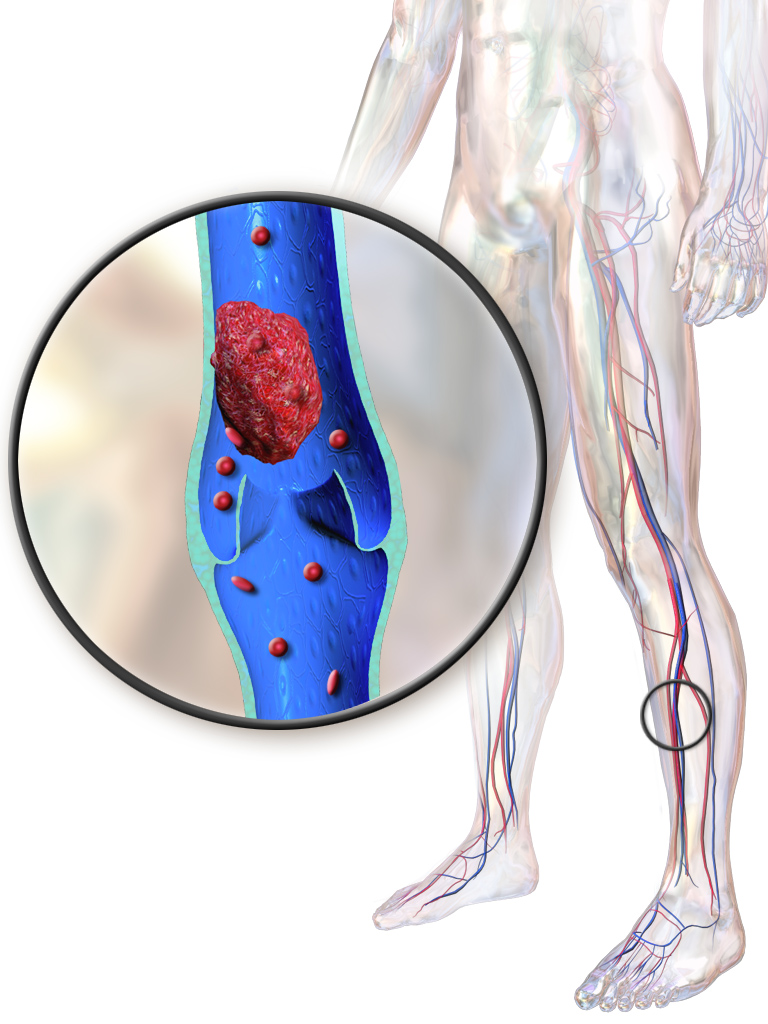Deep vein thrombosis (DVT) is a serious condition that occurs when a blood clot forms in a vein located deep inside your body. A blood clot is a clump of blood that is in a gelatinous, solid state. Deep vein blood clots typically form in your thigh or lower leg, but they can also develop in other areas of your body. Other names associated with this condition include thromboembolism, post-thrombotic syndrome, and post-phlebitic syndrome. You to see Hematology doctor.

DVT occurs most commonly in people who are over 50 years in age. Certain conditions that alter how your blood moves through your veins can raise your risk of developing clots. These include:
- having an injury that damages your veins such as a bone fracture
- being overweight, which puts more pressure on the veins in your legs and pelvis
- having a family history of DVT
- having a catheter placed in a vein
- taking birth control pills or undergoing hormone therapy
- smoking (especially heavily)
- staying seated for a long time while you’re in a car or on a plane, especially if you already have at least one other risk factor
Some diseases and disorders can increase your risk of having blood clots. These include hereditary blood clotting disorders, especially when you have at least one other risk factor. Cancer and inflammatory bowel disease can also increase the risk of developing a blood clot. Heart failure, a condition that makes it more difficult for your heart to pump blood, also occurs with an increased risk of clots.
Surgery
DVT is a major risk associated with surgery. This is especially true if you’re having a surgery in the lower extremities, such as joint replacement surgery. Your doctor will discuss the risk of DVT if you need joint replacement surgery.
Pregnancy
Being pregnant increases your risk of DVT. Increased hormone levels, and a slower blood flow as your uterus expands and restricts blood flowing back from your lower extremities, contribute to this risk. This elevated risk continues until about six weeks after giving birth. Being on bed rest or having a cesarean delivery also increases your risk of having DVT.
Common symptoms include:
- swelling in your foot, ankle, or leg, usually on one side
- cramping pain in your affected leg that usually begins in your calf
- severe, unexplained pain in your foot and ankle
- an area of skin that feels warmer than the skin on the surrounding areas
- skin over the affected area turning pale or a reddish or bluish color
People may not find out that they have deep vein thrombosis until they’ve gone through emergency treatment for a pulmonary embolism. A pulmonary embolism is a life-threatening complication of DVT in which an artery in the lung becomes blocked.
DVT treatments focus on keeping the clot from growing. In addition, treatment will attempt to prevent a pulmonary embolism and lower your risk of having more clots.
Medication
Your doctor might prescribe medications that thin your blood, such as heparin, warfarin, enoxaparin, or fondaparinux. This makes it harder for your blood to clot. It also keeps existing clots as small as possible and decreases the chance that you’ll develop more clots.
If blood thinners don’t work or if you have a severe case of DVT, your doctor might use thrombolytic drugs. Thrombolytic drugs work by breaking up clots. You’ll receive these intravenously.
Compression stockings
Wearing compression stockings can prevent swelling and may lower your chance of developing clots. They don’t demonstrate a reduction in recurrent DVT.
Compression stockings reach just below your knee or right above it. Your doctor may recommend you wear these every day.
Find a great selection of compression stockings here.
Filters
You might need to have a filter put inside the large abdominal vein called the vena cava if you aren’t able to take blood thinners. This form of treatment helps prevent pulmonary embolisms by stopping clots from entering your lungs.
However, there is a risk to filters being placed. If left long term, they can actually cause DVT. They should be used short term until the risk of thromboembolism is reduced and anticoagulation can be used.
- dizziness
- sweating
- chest pain that gets worse with coughing or inhaling deeply
- rapid breathing
- coughing up blood
- rapid heart rate

Post a comment